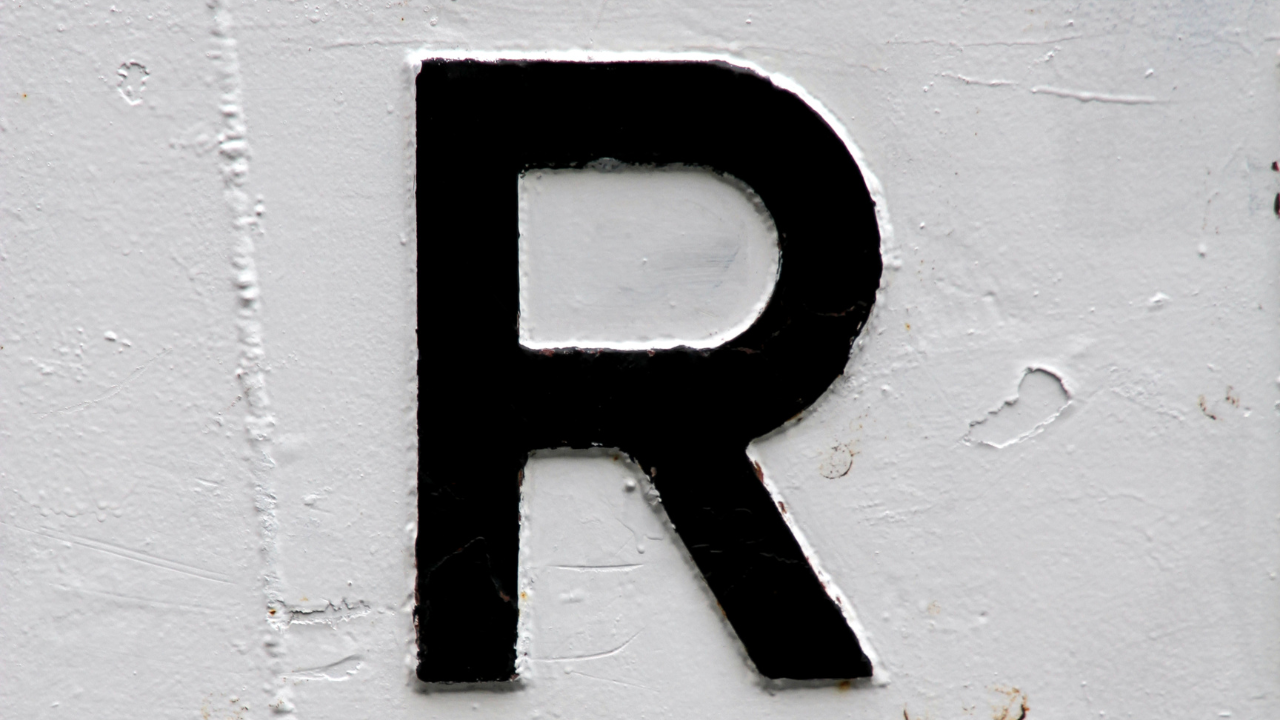Unpacking R Playboicarti: A Fresh Look At R Programming Essentials For 2024
Have you ever felt a little lost trying to get your R code just right, especially when facing those tricky data puzzles? Maybe you've seen those clever `%>%` symbols pop up in scripts and wondered what they really do. Or perhaps, you've spent too much time wrestling with strange characters like `\r\n` in your datasets. It's almost like R has its own secret language, full of quirks and shortcuts that can make or break your data work. Well, today, we're going to talk about "r playboicarti," not as a person, but as a fresh, practical way to think about tackling these very real R programming challenges.
This "r playboicarti" approach, you see, is about getting down to the core of what makes R tick, especially when dealing with data. It’s about understanding those small but mighty differences, like how `[` and `[[` behave when you're pulling information from a list or a data frame. It's also about finding the most efficient ways to combine your datasets, perhaps using powerful tools like `data.table` instead of older methods. Really, it's a mindset focused on clarity, efficiency, and solving problems that come up every day for anyone working with data in R.
So, as we move through this, we'll explore some of the specific R programming questions and scenarios that truly define what "r playboicarti" means in practice. We'll look at everything from cleaning up messy strings to making your code run faster, all while keeping things clear and easy to follow. You know, sometimes the simplest changes can make the biggest difference in your R projects, and that's precisely what this approach aims to highlight for you.
Table of Contents
- Understanding r playboicarti: A Practical R Mindset
- The Magic of the Pipe Operator: `%>%` in R
- Demystifying String Endings: `\r\n`, `\r`, and `\n`
- Accessing Data Like a Pro: `[` vs `[[` vs `$`
- Supercharging Data Joins: `data.table` for Speed
- Removing Unwanted Characters from Your Strings
- Hardware Matters for R Performance: A Quick Look
- Beyond R: File Modes and Data Integrity
- Frequently Asked Questions
- Conclusion
Understanding r playboicarti: A Practical R Mindset
The phrase "r playboicarti," in our context, isn't about a person or a specific software package you can download. Instead, it's a way of thinking about R programming. Think of it as a particular philosophy for working with data in R, one that really focuses on clarity, efficiency, and truly understanding the tools at your fingertips. It's about getting to the heart of how R works, so you can write code that's not only functional but also easy to maintain and, frankly, quite elegant. This approach values practical solutions over overly complex ones, and it encourages a deep dive into the nuances that can sometimes trip up even experienced R users. For instance, when you're trying to figure out why your code isn't returning output, like when you type `v <.` and nothing happens, the "r playboicarti" mindset prompts you to investigate the underlying mechanisms of R's console behavior and expression evaluation, rather than just guessing. It's about asking the right questions and digging into the specific behaviors of R.
This way of looking at R, you see, often involves exploring the less obvious aspects of the language. It’s about recognizing that small differences, like those between `\n` and `\r` in strings, can have a big impact on your data cleaning tasks. It’s also about knowing when to pick one method over another, such as choosing between different ways to access elements in a list or a data frame. This thoughtful approach helps you avoid common pitfalls and write more robust code. It's really about building a solid foundation in your R skills, making sure you're not just copying code but truly grasping why it works the way it does.
So, as we talk about "r playboicarti," consider it a guide to becoming a more effective R programmer. It's about being aware of the subtle behaviors of functions and data structures, and how they affect your work. This means asking questions like, "What is the difference between these two methods for accessing data?" or "Are there places where one should be used over the other?" It’s a very hands-on and curious way to learn, always pushing you to look a little deeper into the R environment. And that, in a way, is what makes your R journey so much more rewarding.
The Magic of the Pipe Operator: `%>%` in R
One of the truly wonderful tools in modern R programming, especially when you're doing a lot of data manipulation, is the `%>%` operator. You might have seen it popping up in packages like `dplyr` and `rvest`. This isn't just a fancy symbol; it's a powerful way to chain operations together, making your code much easier to read and understand. Instead of nesting functions inside each other, which can get pretty messy, the pipe lets you read your code almost like a sentence. For example, instead of `func3(func2(func1(data)))`, you can write `data %>% func1() %>% func2() %>% func3()`. It's a bit like passing a piece of data from one step to the next, in a very clear, sequential flow.
This pipe operator is often talked about as a way to write "closure blocks" in R, though that's a slightly more technical way of putting it. What it really does is help you express a series of data transformations very naturally. Imagine you're cleaning a dataset: you first filter it, then select certain columns, then group it, and finally summarize it. Without the pipe, each step might involve creating a new temporary variable or nesting functions deeply. With `%>%`, you simply connect these steps with the pipe, and the output of one step becomes the input for the next. This makes your code flow much more logically, and it's easier to see exactly what's happening to your data at each stage.
For anyone embracing the "r playboicarti" approach, using the pipe operator becomes almost second nature. It helps create code that is not only functional but also highly readable and maintainable. It's about making your data transformation pipelines as clear as possible, so that anyone, including your future self, can quickly grasp the logic. This really helps cut down on confusion and makes collaborative projects much smoother. So, if you haven't yet, spending some time getting comfortable with `%>%` will truly change how you write R code for the better.
Demystifying String Endings: `\r\n`, `\r`, and `\n`
Working with text data in R often means encountering some interesting characters, and among the most common are those that represent line breaks. You might see `\r\n`, `\r`, or `\n` embedded within strings, and it's very common for people to wonder, "What's the difference between these?" and "How is a string affected by each?" Well, these are actually different ways computers tell a line to end, stemming from various operating system conventions. `\n` stands for "newline" or "line feed," and it's the standard way to start a new line on Unix-like systems, including macOS and Linux. It simply moves the cursor down to the next line. On the other hand, `\r` means "carriage return," which is a throwback to typewriters; it moves the cursor to the very beginning of the current line without advancing to the next one. Windows systems, interestingly, use both: `\r\n`, which means "carriage return" followed by "line feed," effectively moving the cursor to the beginning of the next line. So, in a way, each one has its own specific job.
Understanding these differences is pretty important, especially when you're bringing data into R from various sources or trying to make your text consistent. If you have a file created on a Windows machine and you open it on a Linux system, those `\r\n` sequences might not behave as expected, sometimes appearing as strange characters or causing formatting issues. This is a practical difference that can really mess with your string operations if you're not careful. For instance, if you're trying to split a string by lines, using just `\n` might not catch all the line breaks if your data contains `\r\n` or standalone `\r` characters. It's a subtle point, yet it often comes up in real-world data cleaning scenarios.
The "r playboicarti" approach emphasizes getting these foundational details right. Knowing the nuances of `\n` versus `\r` helps you write more robust data cleaning scripts. It's about being precise with your string manipulation, which is a very common task in data preparation. So, when you're tasked with replacing occurrences of `\r\n` and `\r` with just `\n`, knowing exactly what each character does makes the replacement process much more straightforward and effective. This kind of detailed knowledge helps you avoid headaches down the line when your data isn't behaving as you expect. It's almost like having a secret weapon for clean data.
Cleaning Up Line Breaks in Your Data
Given the different ways line breaks can show up, you often need to standardize them in your R strings. The goal is typically to have all line breaks represented consistently, usually as `\n`. This is a common task, and R provides excellent tools for it, particularly functions from the `stringr` package or base R's `gsub()`. For example, if you have a string that might contain a mix of these line endings, you might first replace `\r\n` with `\n`, and then replace any remaining standalone `\r` with `\n`. This two-step process ensures that all variations are converted to the standard newline character. It's a fairly simple yet incredibly effective way to prepare your text data for further analysis or storage, making sure your strings are uniform and predictable.
Let's say you have a vector of strings, and some of them have these mixed line endings. The problem is that when you run your code, there's no return in the console, or it doesn't give you the output you expect because of these hidden characters. You mean it does run the code, but does not return any output that makes sense to you. This is where explicit string replacement becomes necessary. Using regular expressions with `gsub()` allows you to target these specific patterns. For instance, `gsub("\r\n", "\n", your_string)` would handle the Windows-style breaks. Then, `gsub("\r", "\n", your_string)` would catch any stray carriage returns. This systematic approach, really, is a core part of the "r playboicarti" emphasis on meticulous data preparation. It's about making sure your data is perfectly clean before you start any serious analysis.
By taking the time to understand and implement these string cleaning steps, you're not just fixing a problem; you're building a habit of robust data handling. This practice ensures that your R scripts are resilient to variations in input data, which is a very valuable skill. It’s a good example of how paying attention to small details can lead to much more reliable and efficient data workflows. So, making sure your line breaks are consistent is a tiny but mighty step in your data journey.
Accessing Data Like a Pro: `[` vs `[[` vs `$`
R provides two different methods for accessing the elements of a list or data.frame, and actually, there are three main ways: `[`, `[[`, and `$`. Knowing the difference between them, and when to use one over the other, is pretty fundamental for writing good R code. The `[` operator is used for subsetting. It can return a list or data frame, even if you're only asking for one element. Think of it as always giving you back a structure, a bit like taking a slice of a cake. If you ask for a single slice, you still get a slice, not just the ingredients of that slice. This is very useful when you want to keep the structure of your data intact, perhaps to continue chaining operations with the pipe operator.
On the other hand, `[[` is used for extracting a single element. When you use `[[`, you get the actual content of that element, not a list containing that element. It's like reaching into a box and pulling out the specific item inside, rather than taking the box itself. This is what you'd use when you want to work directly with a specific column from a data frame or an item from a list. It's also the only way to access elements by a computed name or a variable that holds the name, which is a very practical difference. So, if you have a column name stored in a variable, `df[[my_column_name]]` is the way to go, whereas `df$my_column_name` would look for a column literally named "my_column_name."
The `$` operator is a convenient shortcut, primarily for accessing columns in data frames by their literal names. It's very easy to type and read, which makes it popular for interactive work. However, it only works with literal names, meaning you can't use a variable to specify the column you want. This is a key limitation compared to `[[`. So, while `$` is great for quick access, `[[` offers more flexibility, especially when you're writing functions or dealing with dynamically named columns. The "r playboicarti" approach encourages you to understand these nuances because choosing the right access method can affect both the clarity of your code and, in some cases, its performance, especially with larger datasets. It's about picking the right tool for the job, every single time.
Supercharging Data Joins: `data.table` for Speed
When you're working with larger datasets in R, combining them efficiently becomes a really big deal. While base R's `merge()` function works, it can get pretty slow when your data frames grow very large. This is where `data.table` comes into its own. `data.table` is a package that provides an incredibly fast and memory-efficient way to handle data, especially for operations like joining or merging. It's designed to be a high-performance alternative to `data.frame`, and it truly shines when you need to translate SQL joins on foreign keys to R syntax. The "r playboicarti" mindset really appreciates tools that give you a significant performance boost without adding unnecessary complexity.
Think about how you'd do a basic left outer join in SQL. With `data.table`, you can achieve this with remarkably concise syntax. Instead of `merge(df1, df2, by = "key_column", all.x = TRUE)`, a `data.table` join looks more like `df1[df2, on = "key_column", nomatch = NA]`. This syntax, while perhaps looking a little different at first, is incredibly powerful. It allows for very expressive and efficient operations, often performing joins in a fraction of the time that `merge()` would take, particularly on large data volumes. This efficiency is not just about saving time; it's about being able to work with datasets that might otherwise be too big for your system to handle comfortably.
The `data.table` package also offers a very flexible way to perform different types of joins (inner, left, right, full, cross) and to chain operations together, much like the pipe operator does for `dplyr`. It's a bit like having a Swiss Army knife for data manipulation. For anyone serious about optimizing their R code for big data, `data.table` is an absolutely essential tool. It provides efficient alternatives to `merge` for larger data.frames in R, showing how to do a basic left outer join with impressive speed. This kind of optimization is a cornerstone of the "r playboicarti" approach, which always seeks the most effective and performant ways to get the job done.
Removing Unwanted Characters from Your Strings
Data cleaning is a huge part of working with any dataset, and a very common task involves removing specific characters from strings within a vector. This is pretty similar to the "find and replace" feature you might use in spreadsheet software like Excel, but in R, you have much more control and flexibility. You might need to get rid of punctuation, special symbols, or even extra spaces that are messing up your data. The data you start with often isn't perfectly clean, so this step is almost always necessary before you can do any meaningful analysis. The "r playboicarti" approach stresses the importance of having pristine data, and string cleaning is a big part of that.
R offers powerful functions, especially those that use regular expressions, to accomplish this. Functions like `gsub()` from base R or `str_replace_all()` from the `stringr` package are your best friends here. For example, if you want to remove all digits from a string, you can use a regular expression like `"[0-9]"`. If you need to strip out all non-alphanumeric characters, a pattern like `"[^a-zA-Z0-9 ]"` (which means "anything that is not a letter, a number, or a space") can do the trick. This level of precision allows you to target exactly what you want to remove, leaving the rest of your string intact. It's really about being able to transform your raw text into a usable format, ready

Letter R PNG

The letter R - The Letter R Photo (22189138) - Fanpop

R: Using R to process Google Analytics